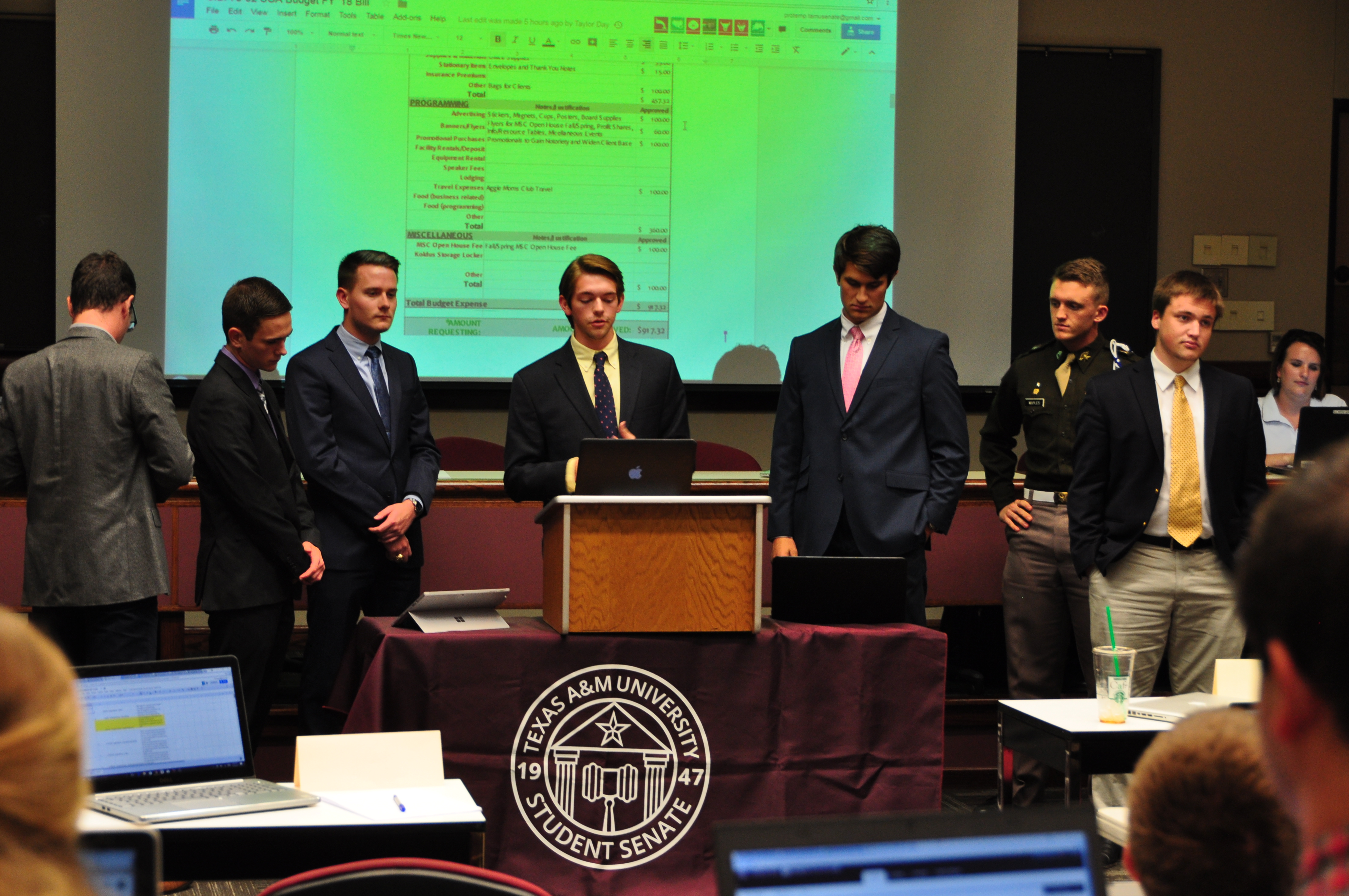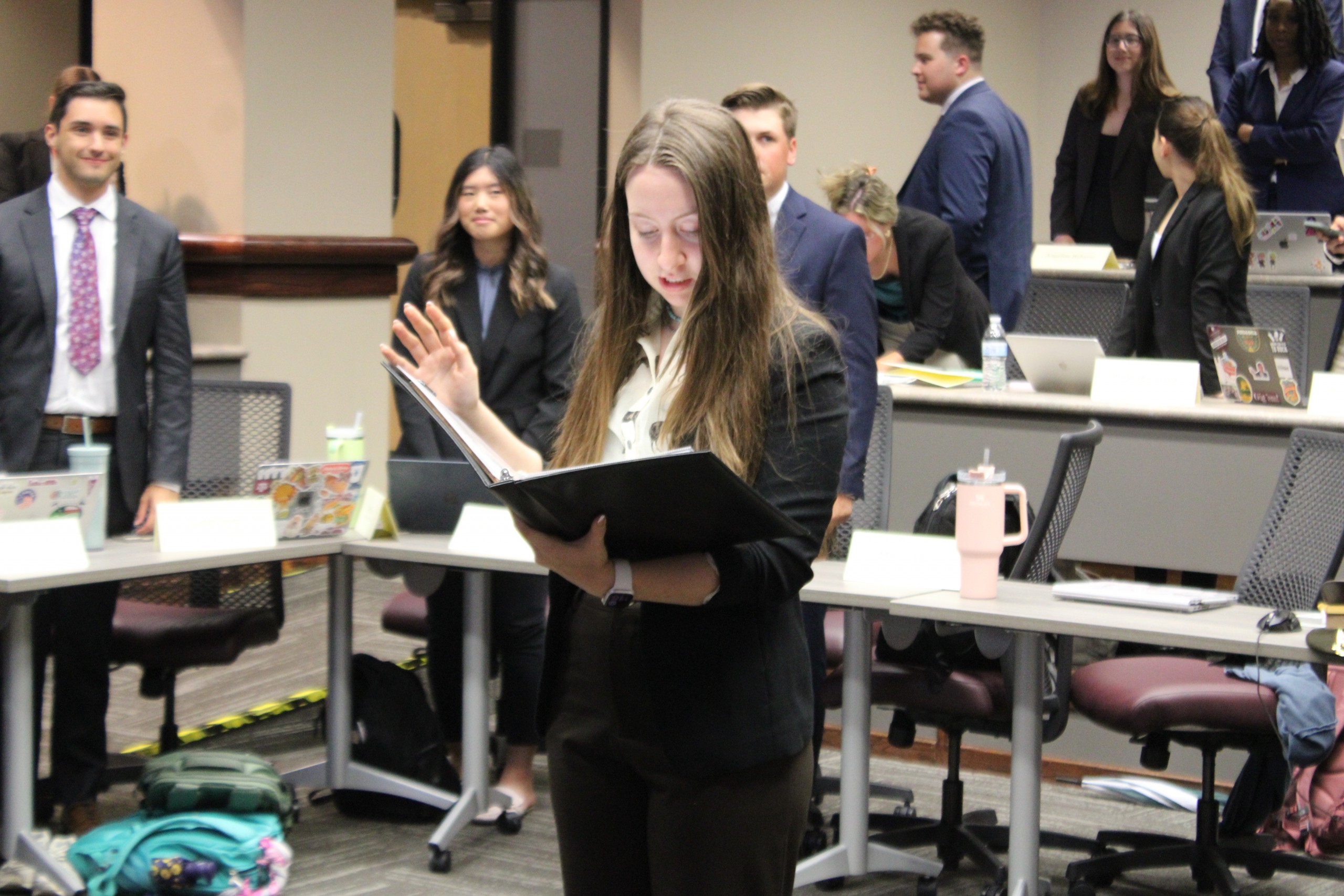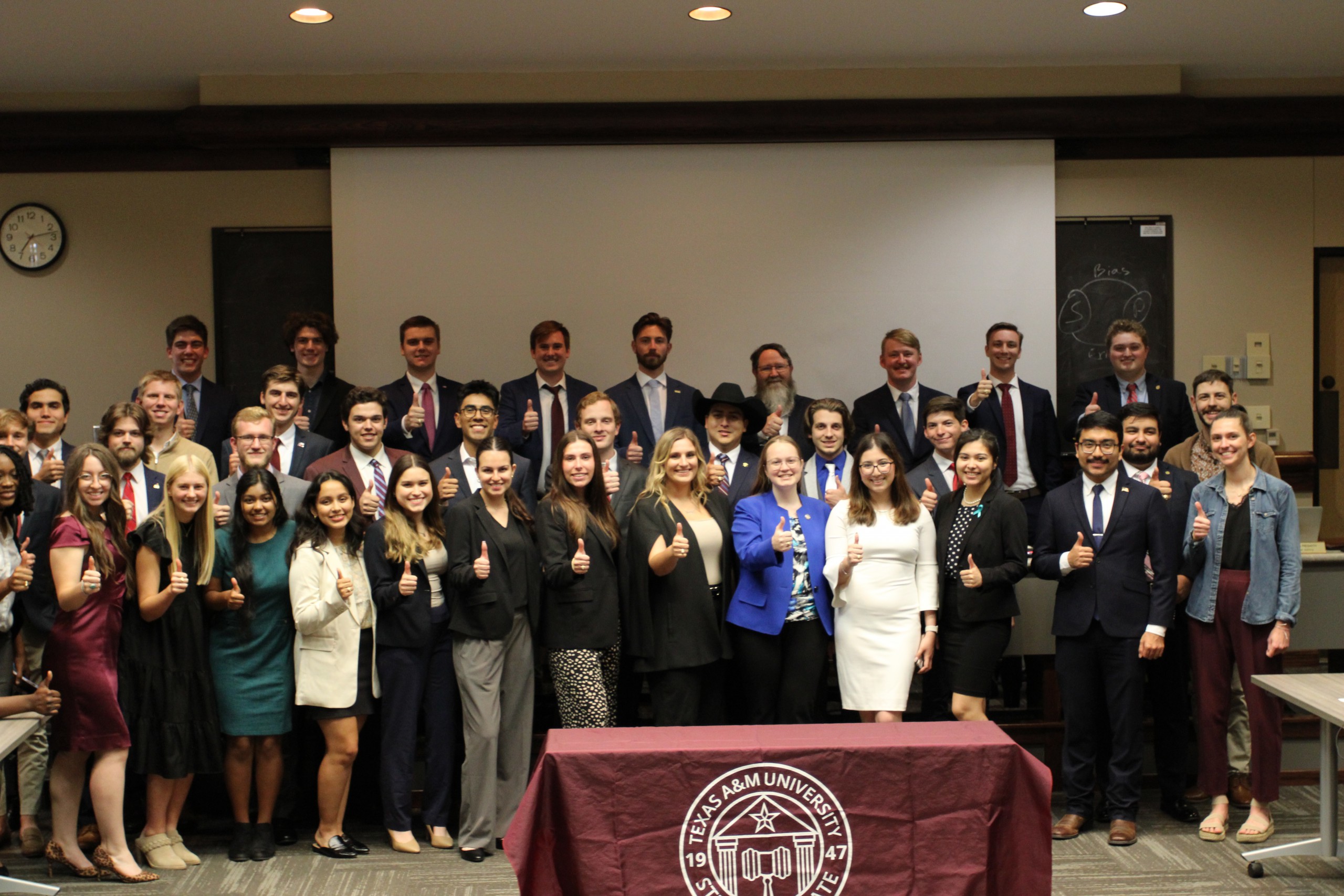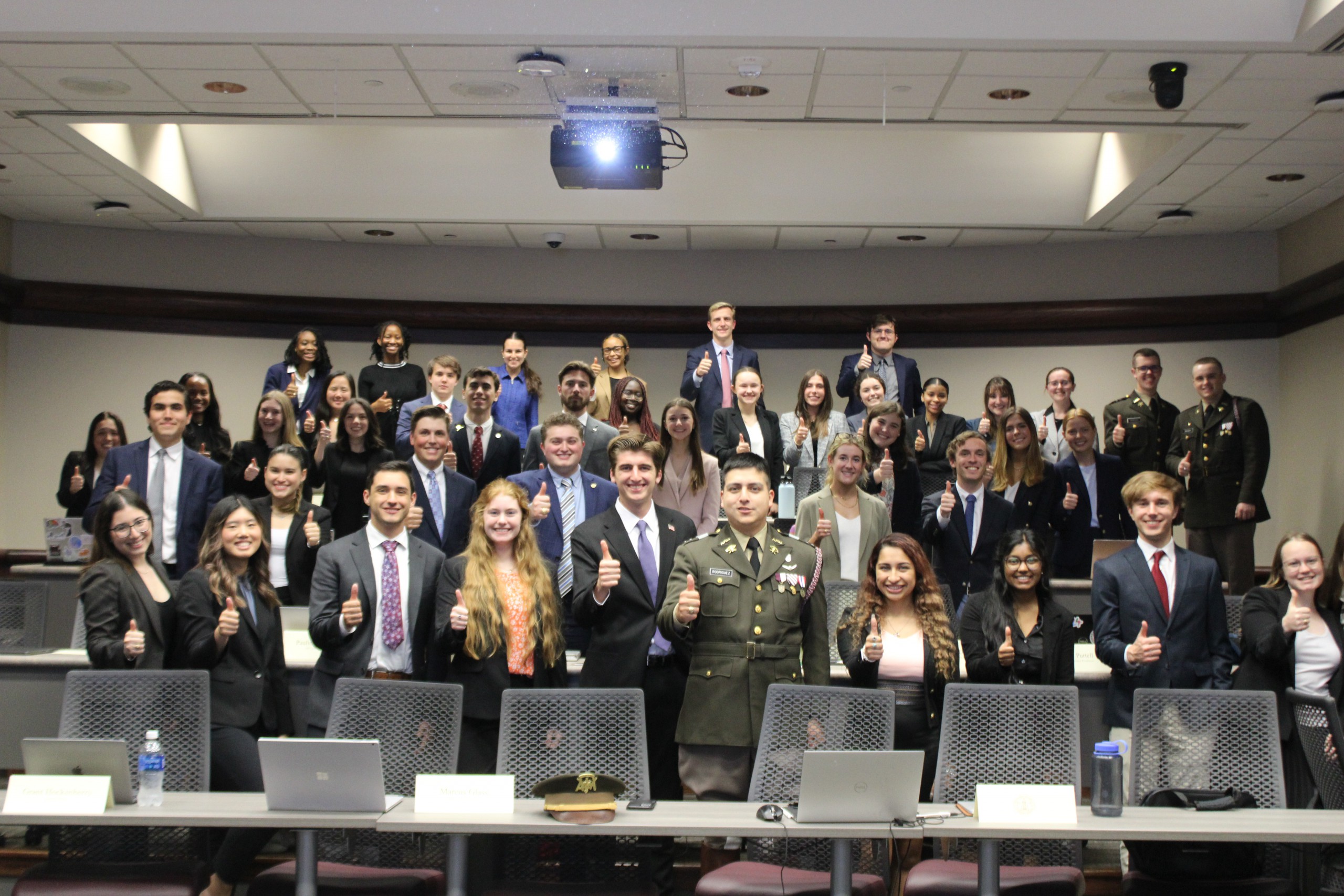SENATE HISTORY
The origins of the Student Government Association can be traced to just before the turn of the century. At that time, all student concerns were handled through the Corps of Cadets. As the A&M College of Texas grew, however, the class officers began to take an interest in such matters.
The Student Senate is the origin of the Student Government Association. At the turn of the 20th century, all student issues and concerns were handled by the Corp of Cadets. As the Texas A&M College grew elected class officers began to take an interest in these matters. In 1910 these officers established the Students’ Council. Its primary function served to enforce the honor system and to supervise individual conduct. The Council; however, had no real disciplinary or advisory power as it was outside of the Corp of Cadets structure and was later dissolved in 1916.
In 1945, the class officers consisting of the four Class Presidents, the Cadet Colonel, and four regimental representatives reformed the Students’ Council. This council advised the Dean of Men, as there were no women at TAMC at the time, on matters concerning student activities, student aid, student welfare, and student morale. On October 15th, 1947, the newly elected student representatives met at the Groove to elect the first President of the Students’ Council. This president, A.D. Bruce quickly renamed the organization to the Student Senate creating its first “Constitution of the Student Body.” This body was reformed to act in an executive capacity for the student body both on and off campus. The Senate was to serve as a liaison between the student body and the administration faculty, and other universities in matters concerning students. Thus, the Student Senate became the true governing body of the students and, by 1950, was recognized as the highest all-student unit in the A&M structure. Its representatives were elected by living areas, class, and academic colleges.
The Student Senate further expanded in 1972 under President John Sharp, now chancellor of the Texas A&M University System, when the Senate approved the creation of the Executive Branch and the Judicial Branch to the new Student Government Association creating a three-branch government in reflection to the Texas and US governments. The first Speaker of the Student Senate was elected in the following session. In 1975, due to significant growth the Student Government Association became a part of the newly formed Department of Student Activities.
By 1990 the Senate had continued to grow consisting of 101 senators, 6 officers, and the newly founded Fish Aides. In 1992, the Student Senate began meeting in the Governance Room, which still currently houses its biweekly meetings. In 1997 the 50th Session, led by Alice Gonzalez saw their building renamed to the John J. Koldus Building in honor of the great Vice President for Student Affairs.
In 2008, the 60th Session led by John T. Koch, added the Constituency Affairs Committee as the seventh standing committee of the senate as well as adding the Off Campus caucus.
The 61st Session, led by Cody T. Vasut, saw a major shift in the structure of the Senate as Officers were now solely elected from within the Senate. The 61st Session also saw the creation of the Archives of the Senate and a major push to chart the history of not only the Senate but the Student Government Association as a whole. This session also saw the creation of the Student Government Association Code, the sole governing document of the SGA.
The 63rd session, led by Hilary Albrecht, saw the splitting of the External Affairs Committee into two new legislative committees: the Legislative Affairs Committee and the Community Relations Committee.
The 69th session, led by Joseph Hood, saw the updating of the Student Senate Seal.
The 76th Session, led by Andrew Applewhite, saw the updating of their seal by Speaker Pro Tempore Robert Hargrove and the splitting of the SGA Code into 5 separate governing documents. The 76th Session also saw the first successful impeachment of their Student Body President which led to the election of a new speaker, Marcus Glass
Today, the Student Senate consists of 80 Senators, 10 officers, ex-officio officers, and numerous student aides, committee members, and liaisons. The Student Government Association now consists of over 1500 students, 19 committees and commissions, and a budget of approximately $50,000.
The objectives established in 1947, however, have remained unchanged and are still followed today. Student service, student development, and student representation continue to be the primary goals of the Student Senate and the Student Government Association as a whole.





